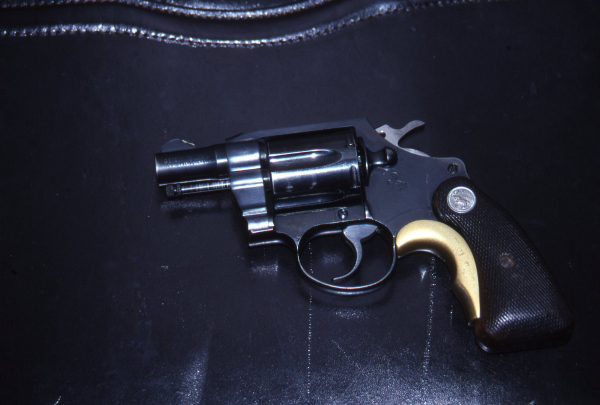While working up last week’s feature for this space, I was forced to consider my own introduction to handguns and how I chose to proceed. This isn’t a path for someone to personally follow, just an example of how random the trip can be.
Early on in my life, a part of our tribe from Iowa had come down for a vacation and their patriarch brought along the family gat, an H&R “Sportsman,” as I recall. At some time named the H&R 999, this was a revolving pistol, blue with a six-inch barrel. A more-or-less trigger-cocking design, it’s not what I would call “double action.” It was a top-break, meaning that the cylinder didn’t swing out, but the frame opened like breaking a stick. As the full opening occurred, all nine empties – it was a 9-shooter – were pushed up and out of the cylinder. Keeping it broken open, you could refill it so you could try to manage that awful trigger nine more times.
I’m thinking Dad had them bring that down so I could shoot it and be broken from pursuing a life of handgunnery. If that was the motive, it nearly succeeded.

Shooting revolvers seemed so easy, based on what we saw on TV.
Like all the other youths of the era, I’d seen renditions of revolver work on television – from western dramas to detective shows. It looked so easy.
With the Sportsman, I’m not sure I kept every round on the nearly 500-ft long strip pit.
Quite some time thereafter – being older – I had the loan of a Colt Frontier Scout, an alloy, reduced size Colt Single Action Army. Also chambered in 22 rimfire, I spent most of a summer with that shiny nickeled heater trying to manage seeing the sights in the glare of the sun.
I learned more about shooting a pistol with that gun than I’d learn in shooting a number of the other guns that followed.
My first personally owned rimfire was the Ruger Standard Auto. It wasn’t the finest handgun in the world, but it worked. When I foolishly took it apart in those pre-internet, pre-cellphone, pre-YouTube days, it was a chore to get it back together.
I didn’t learn from that and I much later wandered into the MKII Target from Ruger. That thing was a shooter.
The first centerfire revolver – if you’ve been reading my stuff for any length of time, you know this – was a second-hand Colt Python. A six-inch revolver, it clearly outshot my feeble abilities. It was the first and the one longest in my custody.
Lessons learned from the failure with the H&R, the struggling success with the Frontier Scout, and the use of the Ruger Standard Auto made single action shooting with the Python much easier.
For double-action revolver shooting, I learned more with a Ruger Security-6, a Smith & Wesson four-screw Combat Magnum and a Model 66-1, the latter used in the state’s police academy.
Taking that education to centerfire autos, my first uniform service pistol was a Colt National Match. It’d been roughly handled in its history, but I qualified at 96% with no training and little coaching on my very first cop qual.
After we’d moved to the city where we’d reside in for the next 44+ years, my sister and nephew bought Dad a pistol, a Browning Buckmark. A range had opened north of town and she saw that he got a membership. He’d never cared for pistols; while he was precise with plinking rimfire rifles and a decent wingshot with the scattergun, he thought handguns were a problem.
That was a bias shared by many of his generation, leading to attempts to ban private ownership of handguns in the “Land of the Free” of the 1960s. As he’d aged, he saw that I was living with – and making a living with – handguns without growing horns or a tail.
I’m not sure he ever shot that Buckmark very well; I’m sure he could have if he applied himself.
For my part, I’m glad to have taken the trip. I’m a marginal shot with rifle, middlin’ with a handgun and a lousy wingshot. Some of my best work has been with snub revolvers.
That’s because I forced myself to learn them.
I’m glad to have made the trip; it’s been fulfilling.
— Rich Grassi